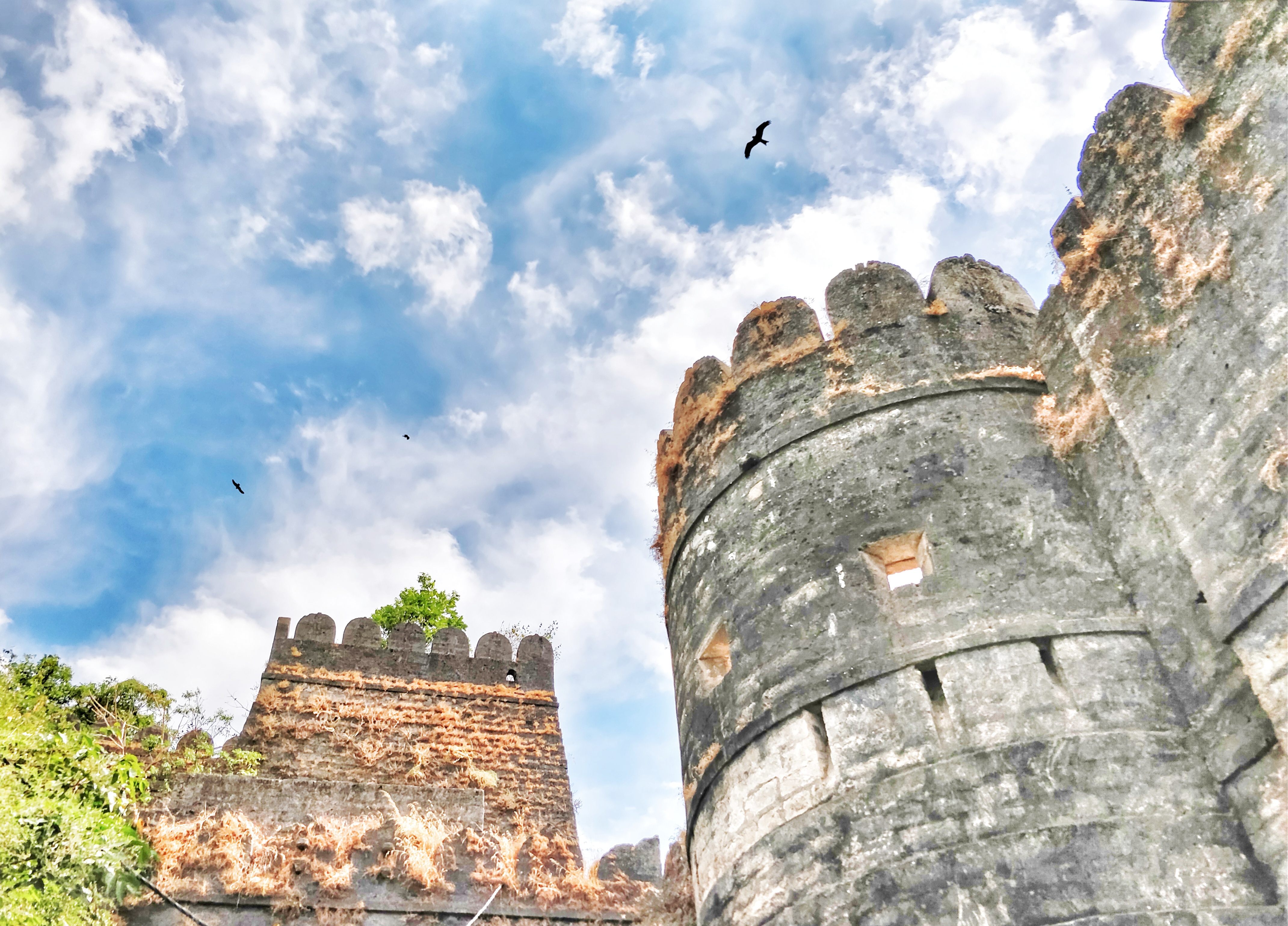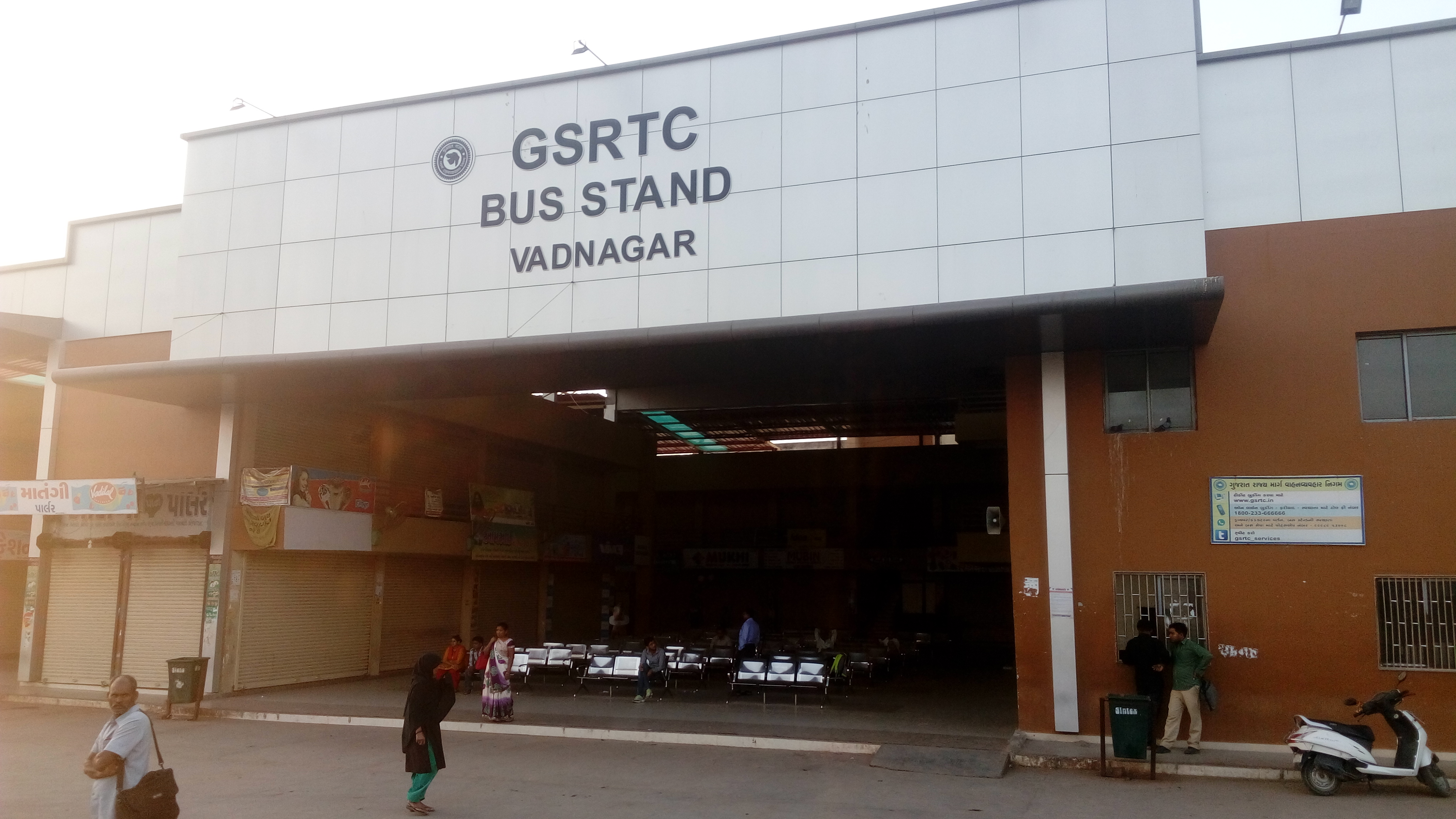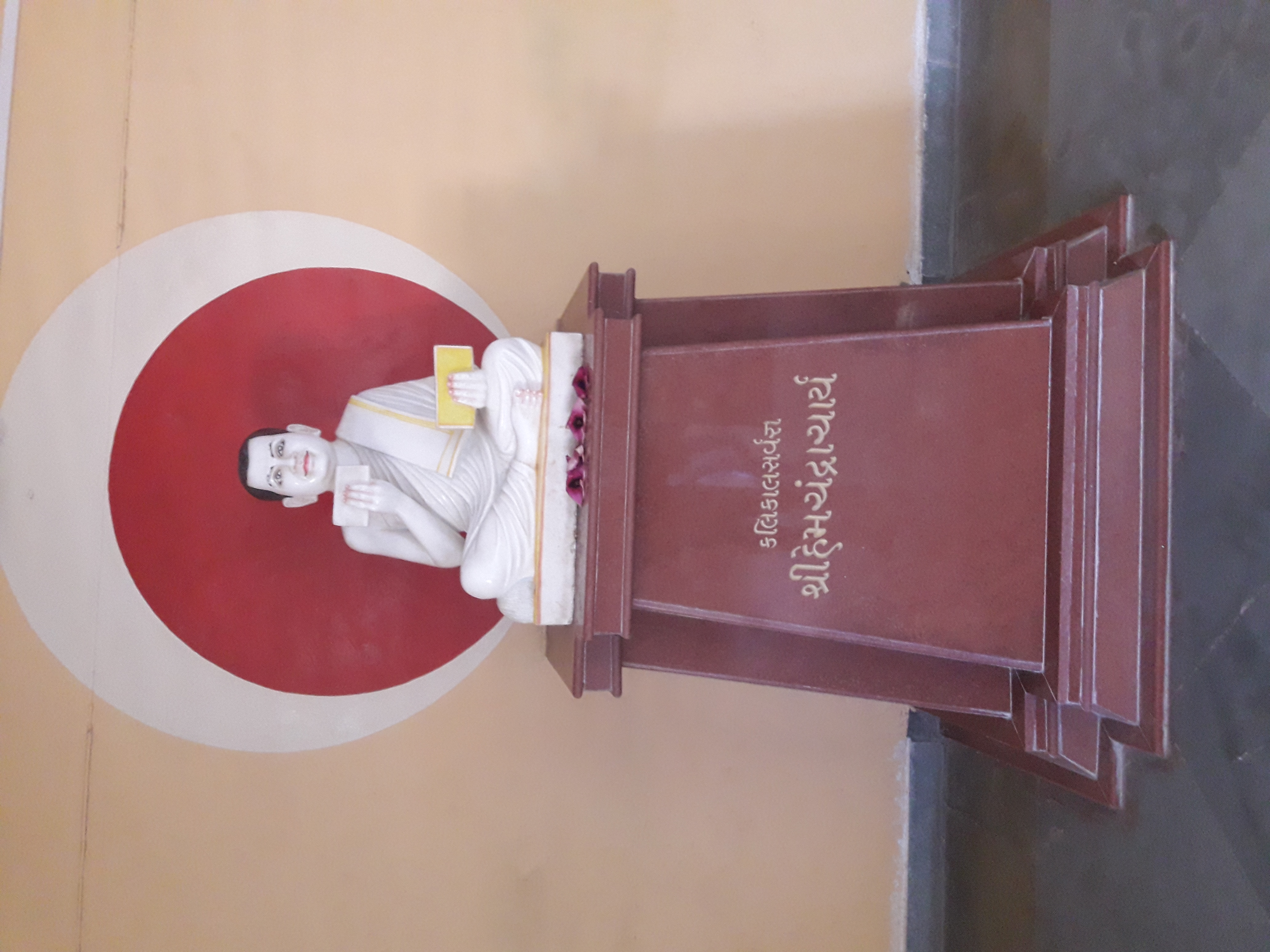|
Mularaja
Mularaja () was the founder of the Chaulukya dynasty of India. Also known as the Chalukyas of Gujarat or Solanki, this dynasty ruled parts of present-day Gujarat. Mularaja supplanted the last Chavda dynasty, Chavda king, and founded an independent kingdom with his capital in Anahilapataka in 940-941 CE. Ancestry The ''Kumarapala-Bhupala-Charita'' of Jayasimha Suri provides a legendary genealogy of Mularaja. It states that the mythical progenitor of the Chaulukya dynasty was Chulukya, a great warrior. He established his capital at Madhupadma, and the dynasty came to be known as the Chaulukyas after him. His successors included several kings including Simha-Vikrama and Hari-Vikrama. After 85 descendants of Hari-Vikrama came Rama. Bhata or Sahajarama, the son of Rama, defeated the Shakas. Bhata's son Dadakka defeated the Gaja kings of Pipasa. Dadakka's kingdom occupied by Kanchikavyala, who was succeeded by the king Raji. Mularaja was the son of Raji and his queen Liladevi. The ... [...More Info...] [...Related Items...] OR: [Wikipedia] [Google] [Baidu] |
Graharipu
Graharipu was a 10th-century Abhira tribe, Abhira king of Saurashtra (region), Saurashtra region of western India with his capital at Vamanasthali (now Vanthali). He was a contemporary of Mularaja, the first Chaulukya dynasty, Chaulukya ruler of Anahilapataka (now Patan). Graharipu built or repaired Durgapalli, the ancient fort in Junagadh identified as Uparkot Fort, Uparkot. The Abhiras grew very powerful during the reign of Graharipu in the middle of the 10th century A.D. He had his capital at Vāmanasthali, now represented by Abhiras the village Vanthali, 9 miles west of Junagadh. The growing power of the Chudasama dynasty and his acts of harassing the pilgrims to Somnath temple resulted in his conflict with Mularaja. After a major and decisive battle, Mulraja defeated Graharipu. The ruler from Kutch, Laksha had fought alongside Graharipu in the battle and was killed. After this battle, the Chudasama domain was repeatedly attacked by subsequent Chaulukya rulers. Titles Gra ... [...More Info...] [...Related Items...] OR: [Wikipedia] [Google] [Baidu] |
Chaulukya
The Chaulukya dynasty (), also Solanki dynasty, was a dynasty that ruled parts of what are now Gujarat and Rajasthan in north-western India, between and . Their capital was located at Anahilavada (modern Patan). At times, their rule extended to the Malwa region in present-day Madhya Pradesh. The family is also known as the "Solanki dynasty" in the vernacular literature. They belonged to the Solanki (clan), Solanki clan of Rajputs. Mularaja, the founder of the dynasty, supplanted the last ruler of the Chavda dynasty around 940 CE. His successors fought several battles with the neighbouring rulers such as the Chudasama Dynasty, Chudasamas, the Paramaras and the Chahamanas of Shakambhari. During the reign of Bhima I, the Ghaznavid ruler Mahmud of Ghazni, Mahmud invaded the kingdom and raided the Somnath temple during 1024-1025 CE. The Chaulukyas soon recovered, and the kingdom reached its zenith under the rule of Jayasimha Siddharaja and Kumarapala (Chaulukya dynasty), Kumarapala ... [...More Info...] [...Related Items...] OR: [Wikipedia] [Google] [Baidu] |
Chaulukya Dynasty
The Chaulukya dynasty (), also Solanki dynasty, was a dynasty that ruled parts of what are now Gujarat and Rajasthan in north-western India, between and . Their capital was located at Anahilavada (modern Patan). At times, their rule extended to the Malwa region in present-day Madhya Pradesh. The family is also known as the "Solanki dynasty" in the vernacular literature. They belonged to the Solanki clan of Rajputs. Mularaja, the founder of the dynasty, supplanted the last ruler of the Chavda dynasty around 940 CE. His successors fought several battles with the neighbouring rulers such as the Chudasamas, the Paramaras and the Chahamanas of Shakambhari. During the reign of Bhima I, the Ghaznavid ruler Mahmud invaded the kingdom and raided the Somnath temple during 1024-1025 CE. The Chaulukyas soon recovered, and the kingdom reached its zenith under the rule of Jayasimha Siddharaja and Kumarapala in the 12th century. Several minor dynasties, such as the Chahamanas of Jalor an ... [...More Info...] [...Related Items...] OR: [Wikipedia] [Google] [Baidu] |
Chavda Dynasty
The Chavda ( IAST:Chávaḍá), also spelled Chawda or Chavada was a dynasty which ruled the region of modern-day Gujarat in India, from c. 690 to 942. Variants of the name for the dynasty include Chapotkatas, Chahuda and Chávoṭakas. During the seventh century, Panchasar was the capital of the Chavda ruler Jayaśekhara. In c. 697, Panchasar was attacked and Jayaśekhara was killed. His wife had fled and she gave birth to Vanraja, who would go on to be the founder (746 or 765) of the city of Aṇahilaváḍa and most prominent ruler of the dynasty. According to ''Prabandhachintámaṇi'', he ruled for 60 years. He was succeeded by Yogaraja (ruled 35 years), followed by Kshemraja (25 years), Bhuyada (29 years), Virsimha (25 years) and Ratnaditya (15 years). Ratnaditya was succeeded by Samantsimha (also known as Chuyadadeva) who ruled seven years. Samantsimha did not have any children so he adopted his nephew Mularaja who overthrew him in 942 and established the Chaulukya dyna ... [...More Info...] [...Related Items...] OR: [Wikipedia] [Google] [Baidu] |
Chamundaraja (Chaulukya Dynasty)
Chamundaraja ( IAST: Cāmuṇḍarāja, r. c. 996–1008 CE) was an Indian king who ruled parts of present-day Gujarat from his capital at Anahilapataka (modern Patan). He was a member of the Chaulukya (also called Chalukya or Solanki) dynasty. Early life Cāmuṇḍarāja was the son of the Chaulukya king Mūlarāja. Inscriptions recording grants made by him as a prince are dated as early as 976 CE, although he ascended the throne much later, sometime during 996-997 CE. Military career The Vastupāla-Tejaḥpāla ''praśasti'' includes conventional praise for Cāmuṇḍarāja, boasting that he decorated the earth with the heads of his enemies, but does not name any specific enemies. According to the 12th century Jain author Hemacandra, Cāmuṇḍarāja defeated the Lata Chalukya chief Bārapa, although other chroniclers attribute this victory to his father Mūlarāja. Therefore, it appears that Cāmuṇḍarāja participated in the war against Bārapa as a prince. Ac ... [...More Info...] [...Related Items...] OR: [Wikipedia] [Google] [Baidu] |
Chapotkata
The Chavda (IAST:Chávaḍá), also spelled Chawda or Chavada was a dynasty which ruled the region of modern-day Gujarat in India, from c. 690 to 942. Variants of the name for the dynasty include Chapotkatas, Chahuda and Chávoṭakas. During the seventh century, Panchasar was the capital of the Chavda ruler Jayaśekhara. In c. 697, Panchasar was attacked and Jayaśekhara was killed. His wife had fled and she gave birth to Vanraja, who would go on to be the founder (746 or 765) of the city of Aṇahilaváḍa and most prominent ruler of the dynasty. According to ''Prabandhachintámaṇi'', he ruled for 60 years. He was succeeded by Yogaraja (ruled 35 years), followed by Kshemraja (25 years), Bhuyada (29 years), Virsimha (25 years) and Ratnaditya (15 years). Ratnaditya was succeeded by Samantsimha (also known as Chuyadadeva) who ruled seven years. Samantsimha did not have any children so he adopted his nephew Mularaja who overthrew him in 942 and established the Chaulukya dynas ... [...More Info...] [...Related Items...] OR: [Wikipedia] [Google] [Baidu] |
Kumarapala (Chaulukya Dynasty)
Kumarapala () was an Indian king from the Chaulukya (Solanki) dynasty of Gujarat. He ruled present-day Gujarat and surrounding areas, from his capital Anahilapataka (modern Patan). Kumarapala was a descendant of the Chaulukya king Bhima I. The information about him largely come from two sources – the numerous Sanskrit and Apabhramasa-Prakrit language inscriptions and the Jain texts. These provide a highly inconsistent historical profile in some respects, and corroborate each other in some. Both portray Kumarapala as a keen and generous patron of arts and architecture, one who supported the divergent religious Indian traditions in Western India, particularly Gujarat and Rajasthan region. Kumarapala inscriptions predominantly invoke Shiva – a Hindu god, and they do not mention any Jain Tirthankara or Jaina deity. The major Veraval inscription calls him ''Mahesvara-nripa-agrani'' (worshipper of Shiva), and even Jain texts state that he worshipped Somanatha (Somesvara, Shiva). ... [...More Info...] [...Related Items...] OR: [Wikipedia] [Google] [Baidu] |
Georg Bühler
Professor Johann Georg Bühler (July 19, 1837 – April 8, 1898) was a scholar of ancient Indian languages and law. Early life and education Bühler was born to Rev. Johann G. Bühler in Borstel, Hanover, attended grammar school in Hanover, where he mastered Greek and Latin, then university as a student of theology and philosophy at Göttingen, where he studied classical philology, Sanskrit, Zend, Persian, Armenian, and Arabic. In 1858 he received his doctorate in eastern languages and archaeology; his thesis explored the suffix ''-tês'' in Greek grammar. That same year he went to Paris to study Sanskrit manuscripts, and in 1859 onwards to London, where he remained until October 1862. This time was used mainly for the study of the Vedic manuscripts at the India Office and the Bodleian Library at Oxford University. While in England, Bühler was first a private teacher and later (from May 1861) assistant to the Queen's librarian in Windsor Castle. Academic career In Fall 1862 B� ... [...More Info...] [...Related Items...] OR: [Wikipedia] [Google] [Baidu] |
Saraswati River (Gujarat)
Saraswati River is a river in western India in Gujarat whose origin is aravali hill. Its basin has a maximum length of 360 km. The total catchment area of the basin is . The Mokeshwar or Mukteshwar dam is on the Saraswati River. Patan and Siddhpur Siddhpur, also spelled Sidhpur, is a town, municipality and headquarter of Sidhpur taluka in Patan district, in the Indian state of Gujarat. It is a historical place located on the bank of the endorheic Saraswati River, which is probably a rem ... are located on the banks of Saraswati River. References Rivers of Gujarat Rivers of India {{India-river-stub ... [...More Info...] [...Related Items...] OR: [Wikipedia] [Google] [Baidu] |
Vadnagar
Vadnagar is a town and municipality in the Mehsana district of the state of Gujarat in India. It just about 35 km from Mehsana city. Its ancient name was Anartapura, and was also known as Anandapura. It was a Buddhist location visited by Xuanzang in 640 C.E. Historian and archaeologist Alexander Cunningham has identified Anandapura with the town of Vadnagar. Vadnagar is also the birthplace of the current Prime Minister of India Narendra Modi. History Several ancient inscriptions and literary sources mention a town called Anartapura or Anandapura, identified as the area in and around the present-day Vadnagar. The epic tale Mahabharata mentions the Anarta Kingdom in the northern part of present-day Gujarat. The oldest Puranic legend about Gujarat is about a king named Anartha. The town is mentioned in the Tirtha Mahatmya section of Nagara Khanda of Skanda Purana by the name of Chamatkarapura. The Junagadh rock inscription (dating from 150 C.E.) of Western Kshatrapa King Ru ... [...More Info...] [...Related Items...] OR: [Wikipedia] [Google] [Baidu] |
Radhanpur
Radhanpur is a town and a municipality in Patan district in the Indian state of Gujarat. Origin of name According to the tradition, the city is named after Radhan Khan, a descendant of Fateh Khan Baloch. Fateh Khan Baloch received a freedom from the Gujarat Sultan Ahmad Shah III, which included the territory of the later day city of Radhanpur. History Radhanpur belonged to the Vaghelas and was known as Lunavada after Vaghela Lunaji of the Sardhara branch of that tribe. Subsequently, it was held as a fief under the Gujarat Sultanate, by Fateh Khan Baloch, and is said to have been named Radhanpur after Radhan Khan of that family. Babi ancestors either entered India accompanying Mughal emperor Humayun or entered the service of Sultan Muzaffar III of Gujarat Sultanate (1561 - 1572). Bahadur Khan Babi was, in the reign of Shah Jahan, appointed manager of Tharad, and his son Sher Khan Babi made manager, thanadar, of Chunval in 1663. Their descendants controlled various village ... [...More Info...] [...Related Items...] OR: [Wikipedia] [Google] [Baidu] |
Hemachandra
Hemachandra was a 12th century () Indian Jain saint, scholar, poet, mathematician, philosopher, yogi, grammarian, law theorist, historian, lexicographer, rhetorician, logician, and prosodist. Noted as a prodigy by his contemporaries, he gained the title ''kalikālasarvajña'', "the knower of all knowledge in his times" and ''father of Gujarati language''. Born as Changadeva, he was ordained in the Śvētāmbara school of Jainism in 1110 and took the name Somachandra. In 1125 he became an adviser to King Kumarapala and wrote ''Arhanniti'', a work on politics from a Jain perspective. He also produced ''Trishashti-shalaka-purusha-charita'' (“Deeds of the 63 Illustrious Men”), a Sanskrit epic poem on the history of important figures of Jainism. Later in his life, he changed his name to Hemachandra. Early life Hemachandra was born in Dhandhuka, in present-day Gujarat, on Kartika Sud Purnima (the full moon day of Kartika month). His date of birth differs according to source ... [...More Info...] [...Related Items...] OR: [Wikipedia] [Google] [Baidu] |



.png)



